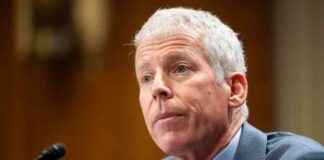California Insurance System Overhaul and Los Angeles Fire: A Story of Resilience and Risk
Amidst the devastating aftermath of a ferocious Santa Ana windstorm that swept through Southern California, leaving chaos and destruction in its wake, a severe brush fire ignited in the affluent Pacific Palisades neighborhood of Los Angeles. The flames roared, devouring over 1,000 structures and prompting tens of thousands of residents to flee for safety as of Wednesday afternoon. Tragically, another massive brush fire erupted near Pasadena around the same time, claiming the lives of at least two individuals. The combined impact of these two blazes posed a dire threat to some of the most prized homes and businesses in the United States. Preliminary estimates from J.P. Morgan suggest that the damage from the Palisades Fire alone could surpass a staggering $10 billion.
**The Reform: A Beacon of Hope in the Face of Adversity**
In the wake of these catastrophic events, the spotlight falls on California’s insurance market, which has been teetering on the brink of collapse due to a series of climate-driven disasters over the past five years. The historic wildfires of 2017 and 2018 prompted a mass exodus of insurance companies from the state, leaving tens of thousands of vulnerable customers in high-risk areas stranded and facing exorbitant premium hikes.
For months, a heated debate raged among state officials, lawmakers, insurers, and consumer advocates regarding the urgent need for reform. Late last month, California’s insurance commissioner unveiled a groundbreaking set of regulations designed to revitalize the ailing insurance market. The cornerstone of these reforms is a mandate that compels insurance companies to expand their operations in what the state deems “distressed areas” – the fire-prone wilderness and mountainous regions where insurers have been scaling back coverage and raising prices.
Under the new rules, insurers will be required to maintain a market share of at least 85 percent in these high-risk zones, relative to their total statewide market share. This move is expected to compel major players like State Farm and Allstate to resume serving customers in vulnerable regions, thereby fostering increased competition and consumer choice. The recent announcement by Mercury, the first insurer to offer policies in the fire-ravaged town of Paradise, serves as a beacon of hope for beleaguered residents.
**Balancing Act: A Delicate Trade-Off for Consumers**
While the push for expanded coverage signals a positive shift in California’s insurance landscape, concerns linger regarding the potential repercussions for consumers. The state’s decision to allow insurers to factor in the true cost of fire risk into their pricing marks a significant departure from the previous regulatory framework. By permitting insurers to utilize forward-looking catastrophe models and account for rising reinsurance costs, California aims to eliminate the long-standing subsidy that has artificially depressed insurance premiums in high-risk areas.
Jason Lloyd, a resident of fire-prone Lake County, echoes the apprehensions of many homeowners grappling with soaring insurance costs. Despite relocating to the region to be closer to family, Lloyd was dismayed to discover that his annual insurance premium exceeded $8,000 – a hefty price tag that may escalate further under the new regulations. The delicate balance between expanding coverage and empowering insurers to adjust prices has sparked a wave of uncertainty among residents, who fear a resurgence of unaffordable premiums.
**Looking Ahead: Challenges and Opportunities**
As California charts a course towards a more resilient and sustainable insurance market, other states in the West confront similar challenges in the aftermath of devastating wildfires. Colorado and Oregon are witnessing the emergence of coverage gaps, prompting officials to explore innovative solutions akin to California’s FAIR Plan. The grand bargain struck between California and the insurance industry offers a valuable blueprint for addressing coverage disparities and empowering insurers to set fair prices reflective of the true risk landscape.
Despite the strides made by California’s reforms, the specter of future mega-blazes looms large, casting a shadow of uncertainty over the state’s insurance industry. Experts warn that additional catastrophic events on the scale of previous wildfires could precipitate further price hikes and availability gaps, jeopardizing the fragile equilibrium achieved through recent reforms. As the Golden State braces for the challenges ahead, the resilience of its residents and the resolve of policymakers stand as testament to the enduring spirit of California in the face of adversity.














